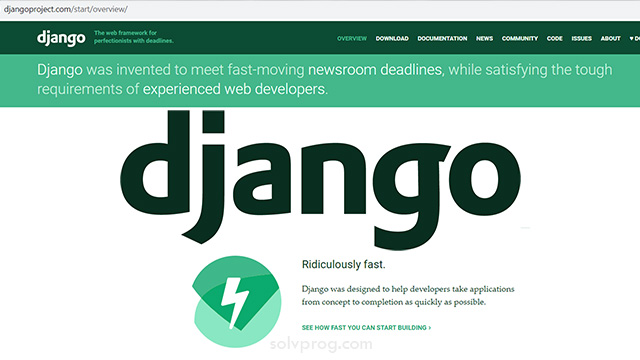Django Introduction: What is Django?

Are you interested in building powerful and scalable web applications? Look no further than Django, a high-level Python web framework that makes it easier to build better web apps more quickly and with less code.
What is Django?
Django is a high-level Python web framework that encourages rapid development and clean, pragmatic design. Built by experienced developers, it takes care of much of the hassle of web development, so you can focus on writing your app without needing to reinvent the wheel. It’s free and open source.
1. Django is a Python framework that helps in creating a web application using Python programming language.
2. Django framework that enables you to concentrate on building your web applications instead of doing some basic configuration or building up architecture.
3. Django focus on reusability of components, also referred to as DRY (Don't Repeat Yourself), and it provides built-in features for common tasks like user authentication, connecting to databases, and performing CRUD operations (Create, Read, Update, Delete).
How Does Django Work?
Django works by following the Model-View-Controller (MVC) architectural pattern, with a slight variation called Model-View-Template (MVT). Let's understand some basic terms and what it's used for.
- Models: You define your data models using Python classes, which represent database tables. These models define the structure and behavior of your data.
- Views: Views handle the logic and processing of incoming requests. They retrieve data from the models, perform any necessary operations, and prepare the data to be displayed.
- Templates: Templates are used to generate the HTML pages that are sent back as responses. They define the structure and layout of the pages and allow you to dynamically insert data retrieved from the views.
- URL Routing: Django uses URL patterns to map incoming URLs to specific views. This allows you to define how different URLs should be handled by your application.
- Forms: Django provides a powerful form handling mechanism. It allows you to define forms based on your models, validate user input, and handle form submission.
- Database Interaction: Django abstracts the underlying database, allowing you to work with different database systems easily. It provides an Object-Relational Mapping (ORM) layer that handles the communication with the database.
- Administration: Django includes an admin interface that automatically generates an administration area for managing your data models. It provides a user-friendly interface for performing CRUD operations on your data.
- Middleware and Utilities: Django has built-in middleware and utility components that handle tasks like request processing, authentication, caching, and more.
Let's learn the process of how Django works in simpler terms:
- When a user visits a URL in your Django web application, Django receives the request.
- Django checks the URLs configured in the urls.py file to find a match for the requested URL.
- Once a matching URL is found, Django calls the corresponding view function associated with that URL.
- The view function performs any necessary logic or data processing.
- The view function may interact with models defined in the models.py file to retrieve or update data from the database.
- The view function then passes the data to a template.
- The template is an HTML file with special Django tags that allow you to dynamically display the data within the HTML structure.
- The template combines the data received from the view with the HTML structure and generates the final HTML content.
- Django sends the HTML content back to the user's browser as a response.
- The user's browser receives the HTML content and renders it, displaying the web page to the user.
In summary, Django receives requests, processes them by matching URLs to views, performs logic and interacts with models, passes data to templates, generates HTML content, and sends the HTML back to the browser for rendering.
This is a simplified explanation of how Django works. Django provides many powerful features and functionalities, but these are the basic steps involved in serving a web page with Django.
Get the latest official version
The latest official version is 4.2.3 (LTS).